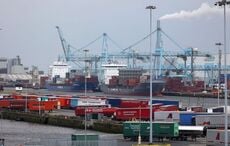The Central Statistics Office has reported that unemployment in Ireland has reached 13.7 percent, a 16-year high. Those signing on for social welfare payments rose from 432,500 to 439,100 from April to May of this year.
Mark Fielding, Chief Executive of the Irish Small & Medium Enterprises Association, said, “A generation will be lost to unemployment and emigration unless the Government treats the jobs crisis as a national priority.”
The Congress of Trade Unions believes that emigration is masking the true figures of unemployment. They believe that unemployment could be as high as 18.5 percent as many of the unemployed have been forced to emigrate or return to education because of the lack of employment.
Economic Advisor for the group, Paul Sweeney, believes that about 100,000 unemployed people have not been included in these new figures. The Economic and Social Research Institute of Ireland have calculated that 60,000 people will leave Ireland this year and will be followed by 40,000 in 2011.
The unemployment figures released by the Central Statistics office have been described as disappointing by Brid O’Brien, of the Irish National Organization of the Unemployed.
“When you look back three, four or five years what's very striking is that for most of the 'noughties' - up to about mid-2007 - unemployment was about four to 4.5 percent,” she said.
“Since then it has been increasing in leaps and bounds and we are now at 13.7 percent...it's a massive increase.”
At the beginning of 2010, economists had predicted that unemployment in Ireland would begin to reverse towards the end of the year. It now seems that the figure will reach, at least, 14 percent.
Kavanagh Fennell, a leading Irish insolvency law firm, reported that 652 businesses have shut down so far this year. That number is 25 percent higher than the same period in 2009.
The Irish Business and Employers Confederation said redundancies would continue. Their economist Reetta Suonperä said, “The seasonally adjusted increase…reflects the underlying weakness in the labor market. Redundancies, for instance, have continued at an elevated level in 2010.”
Fielding, of the Irish Small & Medium Enterprises Association, said that the Government was “funking” on its responsibility to implement policies to get the population back to work.
In a statement released by the group they said that they were “shocked” that the PRSI Exemption Scheme, announced in the last budget, was not in place. Labor costs have been identified as the key barrier for employment creation.
“We are in the throes of the worst economic crisis in living memory and it is critical that we stem the number of job losses," said Fielding.
Not since 1994 has Ireland seen unemployment figures like these. However, the difference is that 14-years ago the labor force was one-third smaller at only two million. These figures seem to prove that Ireland remains in the grips of recession.




Comments